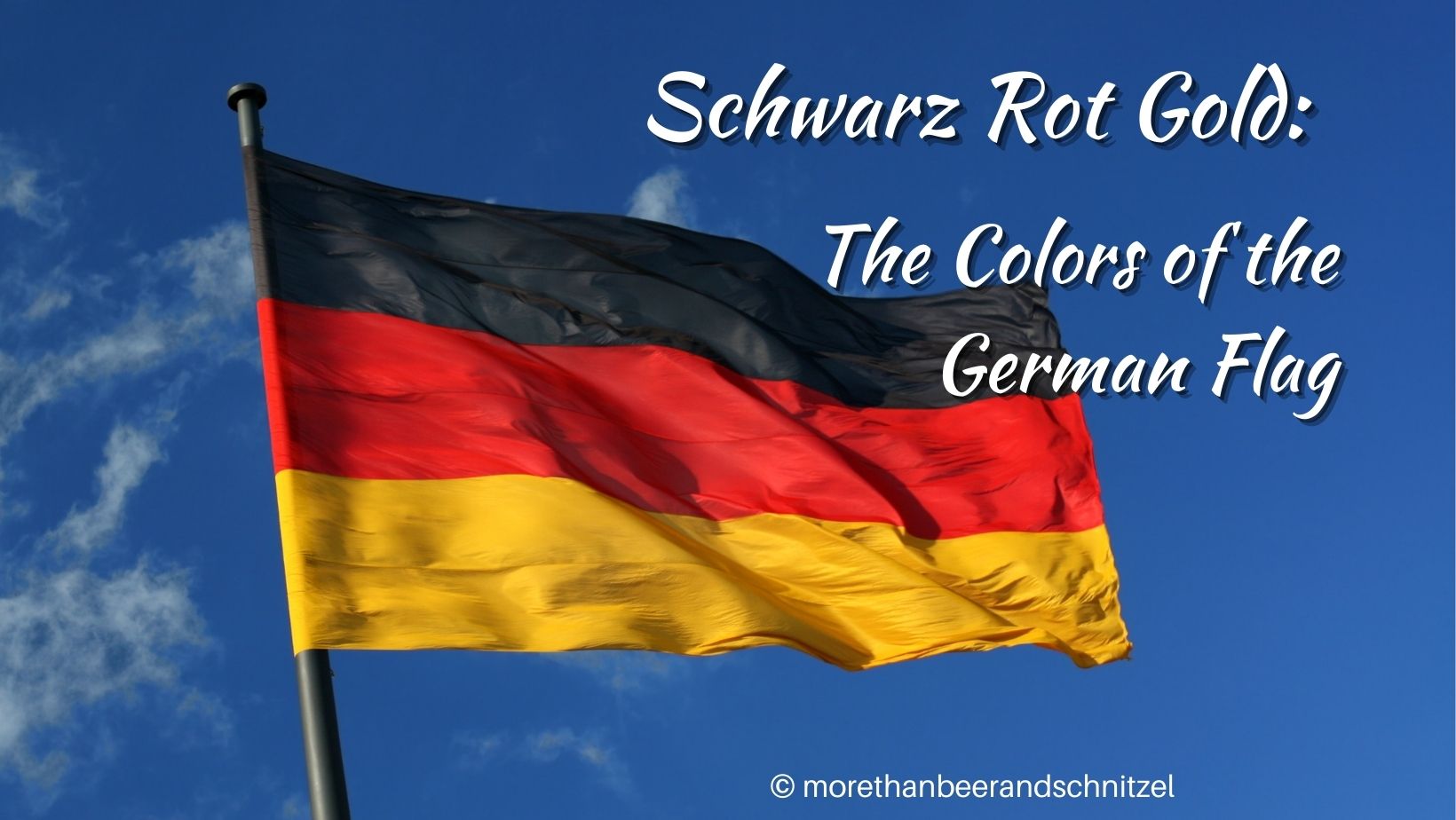Do you know why Germany’s national colors are 𝗦𝗰𝗵𝘄𝗮𝗿𝘇-𝗥𝗼𝘁-𝗚𝗼𝗹𝗱 (black-red-gold)? 
Lützow's Free Corps
During the Wars of Liberation (𝗕𝗲𝗳𝗿𝗲𝗶𝘂𝗻𝗴𝘀𝗸𝗿𝗶𝗲𝗴𝗲) 1813-1815 against Napoleon, the Lützow’s Free Corps (𝗙𝗿𝗲𝗶𝗸𝗼𝗿𝗽𝘀 𝗟𝘂̈𝘁𝘇𝗼𝘄) wore black uniforms with red lapels and golden buttons. When they founded the 𝗝𝗲𝗻𝗮𝗲𝗿 𝗨𝗿𝗯𝘂𝗿𝘀𝗰𝗵𝗲𝗻𝘀𝗰𝗵𝗮𝗳𝘁 (original student league/fraternity Jena) in 1815, they used a black and red flag with golden decoration. It is said that the black-red-gold tricolor developed from this. A saying from the time of the Wars of Liberation underlines the usage of the three colors and their meaning of fighting for freedom and unity:
Aus der Schwärze der Knechtschaft durch blutige Schlachten ans goldene Licht der Freiheit.
From the blackness/darkness (black) of the subjugation through bloody (red) battles to the golden (gold) light of freedom.


Hambach Festival 1832
At the Hambach Festival (𝗛𝗮𝗺𝗯𝗮𝗰𝗵𝗲𝗿 𝗙𝗲𝘀𝘁) in May of 1832, students wore black-red-gold cockades and flags with the three colors could be seen. The 30,000 participants demanded German unity, freedom and democracy.

March Revolution 1848/49
The call for unity and freedom was even louder during the 𝗠𝗮̈𝗿𝘇𝗿𝗲𝘃𝗼𝗹𝘂𝘁𝗶𝗼𝗻 1848/49 (March Revolution). Here the flag and its colors became symbols of national unity and civil liberties. Under these pressures, the parliament in Frankfurt on March 9th, 1848 decided that black-red-gold were going to be the national colors of the German Confederation (𝗗𝗲𝘂𝘁𝘀𝗰𝗵𝗲𝗿 𝗕𝘂𝗻𝗱). The black-red-gold flag was first raised on March 23rd, 1848.




Song: In Kümmernis und Dunkelheit
Inspired by the revolutionary events and the call for a united Germany, Ferdinand Freiligrath wrote a poem dedicated to these events. It calls for Germans to unite the German states under the black-red-and-gold flag.
He didn’t agree with the Frankfurt Parliament using the colors as a symbol for the German Confederation but rather wanted the colors to stand for a united Germany. The revolutionaries should take up arms and get rid of the princes on order to accomplish this goal.
The text, written in March 1848, was set to music by various composers. Robert Schumann wrote the music to the poem in April of the same year, his version is the one we know today.
The poem has 12 stanzas (read them here in German and English). Every stanza ends with
Pulver ist schwarz,
Blut ist rot,
Golden flackert die Flamme!
Powder is black,
Blood is red,
And golden flickers the flame!
The song is also referred to as “Schwarz-Rot-Gold”. The following is a short version.
Weimar Republic and the two Germanys
The flag was also the official flag of the Weimar Republic 1919-1933, and again for West Germany starting in 1949. The GDR (DDR) used the same colors and flag but from 1953 until 1990 it also had a hammer and compass encircled by rye on its official flag.


Flag Days
There are eight days on which the German flag has to be flown from public buildings. German Unity Day on October 3rd, and Day of Labor on May 1st are the only public holidays.
- January 27th: Commemoration Day for Victims of National Socialism
- May 1st: Day of Labor (𝗧𝗮𝗴 𝗱𝗲𝗿 𝗔𝗿𝗯𝗲𝗶𝘁)
- May 9th: Europe Day (𝗘𝘂𝗿𝗼𝗽𝗮𝘁𝗮𝗴)
- May 23rd: Constitution Day (𝗚𝗿𝘂𝗻𝗱𝗴𝗲𝘀𝗲𝘁𝘇𝘁𝗮𝗴)
- June 17th: Anniversary of the 17th of June 1953 (Before the reunification, June 17th was 𝗧𝗮𝗴 𝗱𝗲𝗿 𝗗𝗲𝘂𝘁𝘀𝗰𝗵𝗲𝗻 𝗘𝗶𝗻𝗵𝗲𝗶𝘁 and a public holiday. It commemorates the uprising in East Germany and East Berlin.)
- July 20th: Anniversary of the 20th of July 1944 (attempted assassination of Hitler)
- October 3rd: Day of German Unity since 1990 (𝗧𝗮𝗴 𝗱𝗲𝗿 𝗗𝗲𝘂𝘁𝘀𝗰𝗵𝗲𝗻 𝗘𝗶𝗻𝗵𝗲𝗶𝘁)
- 2nd Sunday before Advent: People’s Day of Mourning (𝗩𝗼𝗹𝗸𝘀𝘁𝗿𝗮𝘂𝗲𝗿𝘁𝗮𝗴)



